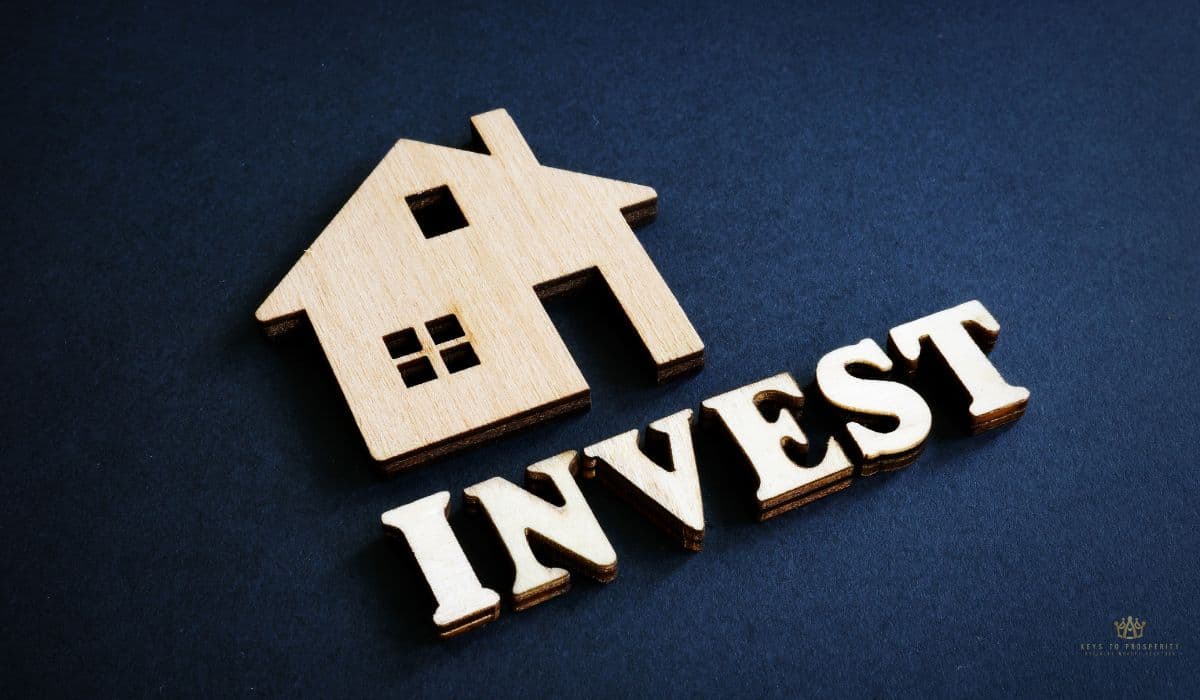It’s no secret the commercial real estate market is under pressure. With roughly $600 billion in loans coming due annually through 2028—adding up to over $2 trillion—investors are facing tighter refinancing conditions just as property values continue to dip.
This combination is making exit strategy planning for different commercial real estate market conditions more important than ever.
From our experience, those who plan early and adjust for shifts in market conditions, interest rates, and property-specific factors are far better positioned to protect their gains and keep their portfolios strong.
This guide is built for commercial real estate investors, portfolio managers, and business owners looking to make smart, well-timed decisions.
We’ll walk through how to evaluate market cycles, choose the right exit strategy, navigate tax implications, and preserve cash flow, all with a focus on what’s working in 2025.
This article will help you understand the landscape, weigh your options, and move with confidence, whether you’re preparing to sell the entire asset or exploring options like a cash-out refinance,
If you caught our previous post on the top real estate investment strategies, this article is your next step. It builds on what we covered there and sets the stage for our deep dive into the strategic implementation of the 1031 exchange next post.
And for those who want the full picture, our commercial real estate exit strategies page is always there as your go-to resource.
Let’s start!
Short Summary
- Exit strategy planning for different commercial real estate market conditions requires understanding market cycles and their impact on property values
- Economic indicators like employment growth, yield curves, and construction permits help predict market shifts for optimal exit timing
- Tax optimization through 1031 exchanges and strategic exit approaches can significantly reduce capital gains tax liability
- Different property types respond uniquely to market cycles – industrial and multifamily tend to weather downturns better than office and retail
- Portfolio management approaches that maintain consistent cash flow during transitions maximize overall investment returns
- Working with specialized tax professionals helps identify the optimal exit timing based on market conditions and personal tax situations
Understanding Market Cycles In Commercial Real Estate
Every real estate market has a rhythm, a predictable pattern that smart investors learn to dance with. Let’s look at these cycles so you can time your exit like a pro:
The Four Phases of Market Cycles
Market cycles in commercial real estate follow four distinct phases:
- First comes recovery, where vacancy rates drop and property values begin climbing.
- Next, expansion hits – rents rise, construction booms, and investors go wild!
- Then comes the hyper-supply phase, where overbuilding creates surplus.
- Finally, recession strikes, causing property values to tumble.
Take the Dallas office market as an example. We watched values skyrocket during 2021-2022’s expansion, then plummet as remote work trends created massive oversupply.
Those who sold during peak expansion locked in significant gains compared to those caught in the recession phase.
Economic Indicators As Crystal Balls
Savvy commercial real estate investors track specific signals to predict market shifts. Employment growth, GDP figures, consumer spending, and construction permits offer early warnings.
When conducting market research, pay attention to the yield curve.
An inverted curve has preceded every recession! In one situation, we spotted rising unemployment in a market six months before property prices began declining, giving clients time to execute their exit strategy before the downturn hit hard.
Property Type Performance Varies Wildly
Not all property types respond identically to market conditions. Multifamily and industrial properties have historically weathered downturns better than office and retail.
Commercial real estate investing requires understanding these differences. During the pandemic, industrial warehouses saw values increase 15% while office buildings dropped 20%. Those with a diversified portfolio could exit underperforming assets while holding winners.
2025’s Interest Rate Impact
Rising interest rates in 2025 mean buyers need higher cap rates to achieve their investment objectives. This directly impacts your exit plan.
Property-specific factors matter too. A medical office with long-term leases generating consistent cash flow might sell well despite high rates.
Meanwhile, a half-vacant strip mall might need significant price reductions or creative owner financing to move in the current market conditions.
Tax Optimization In Commercial Real Estate Exit Strategies
Nobody likes giving Uncle Sam an extra-large slice of their profit pie! Here’s how to keep more of your hard-earned money when exiting commercial real estate investments.
Understanding Capital Gains And 1031 Exchanges
Capital gains taxes can take a massive bite out of your profits. Short-term gains (properties held less than a year) get taxed as ordinary income, while long-term gains face rates of 0%, 15%, or 20% depending on your tax bracket.
To defer capital gains taxes, many investors leverage 1031 exchanges. This powerful strategy allows you to roll proceeds into a like-kind property without triggering immediate taxation.
The key requirements? Identify potential replacement property within 45 days and complete the purchase within 180 days.
Consider this scenario: An investor sold a small retail strip for $2.5 million with a $1.5 million gain. By using a 1031 exchange, she postponed roughly $300,000 in tax liability and leveraged that capital for her next investment.
Tax Implications Of Different Exit Approaches
Your exit method drastically affects your tax implications. An outright sale triggers immediate capital gains, while owner financing spreads the tax hit over multiple years.
- Outright sale: Full tax liability is due in the year of sale
- Owner financing: Taxes paid as you receive installments
- Cash-out refinance: Not a taxable event (you’re taking on debt, not income)
A notable case involved a client considering a quick sale of their apartment complex. After reviewing options with a tax professional, they opted for owner financing which reduced their annual tax burden by $75,000 through income spreading.
Working With Tax Professionals
Don’t wing it alone! Real estate investors who work with specialized tax professionals often discover strategies they didn’t know existed.
Timing matters too. Sometimes selling in January versus December can give you an extra year to prepare for tax liability. A qualified advisor can help you plan the optimal exit timing based on projected market conditions and your personal tax situation.
Capital Improvements And Replacement Selection
Strategic capital improvements before selling can reduce your capital gains by increasing your cost basis. But not all improvements qualify!
When selecting a replacement property in a 1031 exchange, consider its depreciation schedule. Commercial real properties typically depreciate over 39 years, while residential over 27.5 years. This affects your future tax deductions and eventual exit strategy options.
Matching property types often makes the most sense for long-term tax optimization.
Maximizing Returns: Portfolio Management Approach
Successful real estate investing involves making good purchases. But it’s also about knowing when and how to exit.
Below are a few advanced techniques that can transform your portfolio management and boost your returns:
Maintaining Consistent Cash Flow During Exits
Strategic exits shouldn’t leave you cash-poor. Smart real estate investors plan exits that maintain or even enhance their consistent cash flow.
One approach is the rolling exit. Instead of selling an entire property at once, consider selling portions while retaining cash-flowing sections.
In multi-tenant buildings, this works beautifully. There are investors selling off 60% of a retail center while keeping anchor tenants that provided reliable rental income.
Another strategy: time your exits with replacement acquisitions that offer immediate passive income streams. This prevents gaps in your monthly cash flow when transitioning between properties.
- Negotiate seller payments spread over closing and post-closing
- Retain partial ownership in high-performing assets
- Consider sale-leasebacks that convert ownership to predictable rental income
Incorporating REITs Into Exit Strategies
Real estate investment trusts (REITs) offer a fascinating alternative to traditional property exits. They provide liquidity, diversification, and often generate steady income.
An increasingly popular hybrid approach combines private ownership with REIT investment.
For example, a property owner might sell an office building that’s facing rising interest rates, then invest a portion of proceeds into a specialized REIT focusing on sectors with stronger market trends.
This strategy maintains your real estate exposure while shifting asset class risk.
Picture an investor moving capital from retail (struggling due to e-commerce) to industrial REITs (booming from distribution needs), all while avoiding immediate tax liability through partial 1031 exchanges.
Case Studies: Well-Executed Exit Strategies
Nothing beats learning from success stories! In a notable example, a group of private investors owned an aging office complex facing increasing mortgage payments and declining occupancy. Rather than a distressed sale, they:
1. Invested in targeted capital improvements focused on energy efficiency
2. Converted portions to mixed-use to capture changing market demand
3. Implemented an aggressive marketing strategy highlighting sustainability
4. Sold to an institutional buyer at a 32% premium over initial valuation
Another impressive case involved a commercial real estate portfolio with multiple properties approaching peak valuation simultaneously.
Instead of selling everything at once (which would trigger massive capital gains taxes), the owners staggered exits over three years based on individual property performance and economic indicators.
Portfolio Management For Long-Term Goals
Proper portfolio management aligns exit decisions with your broader investment goals. Are you seeking to preserve capital? Generate higher sale prices? Create long-term cash flow?
Your answers should drive your exit approach. Conservative investors might prioritize steady income over maximum profits, while growth-focused buyers might accept temporary cash flow disruption for larger gains.
Remember, the most successful commercial real estate investors view each property as part of an interconnected system. Your exit plan for one asset should complement your entire investment journey, not undermine it.
Final Thoughts
The timing of your exit makes all the difference! Commercial real estate markets constantly shift, creating both risks and opportunities for savvy investors. Your well-defined exit strategy must adapt to these changes while keeping your financial goals front and center.
Smart investors know that planning your departure is just as crucial as selecting properties in the first place. Ready to transform your real estate investing approach? Start building your personalized exit playbook today using the frameworks we’ve outlined.
Need more hands-on guidance with your exit strategies? Check out our homepage for free portfolio assessment tools and market timing calculators to maximize your returns!
Frequently Asked Questions
What Is The Most Tax-Efficient Way To Exit A Commercial Real Estate Investment?
For most investors, a 1031 exchange offers the best tax advantages by deferring capital gains taxes when you reinvest in qualifying replacement property.
This strategy allows you to preserve capital that would otherwise go to taxes, effectively giving you an interest-free loan from the government to grow your portfolio. However, discuss your specific situation with a tax professional as individual circumstances vary.
How Do I Know When It’s The Right Time To Exit A Commercial Property?
The ideal exit timing depends on examining both market cycles (recovery, expansion, hyper-supply, recession) and property-specific performance metrics.
Monitor economic indicators like employment growth, construction permits, and yield curves alongside your property’s cash flow, occupancy trends, and maintenance requirements.
The optimal time to sell is typically during the late recovery or early expansion phase when values are appreciating but before market saturation occurs.
Can I Exit A Property While Maintaining Some Cash Flow From It?
Yes, several strategies allow partial exits while maintaining steady income streams.
Consider seller financing, where you collect payments over time; sale-leasebacks, where you sell but remain as a tenant; or partial interest sales, where you retain ownership in cash-flowing sections.
These approaches can provide capital for new investments while preserving some of the consistent cash flow you’ve established.
How Do Different Exit Strategies Impact My Long-Term Investment Goals?
Your exit strategy dramatically influences whether you achieve your investment objectives. A quick cash sale provides immediate liquidity but may trigger significant tax consequences. Owner financing spreads tax liability while creating passive income.
Meanwhile, a 1031 exchange preserves investment capital for growth but requires reinvestment. The best approach aligns with your specific goals—whether building long-term cash flow, maximizing after-tax returns, or transitioning to different asset classes as market conditions change.






